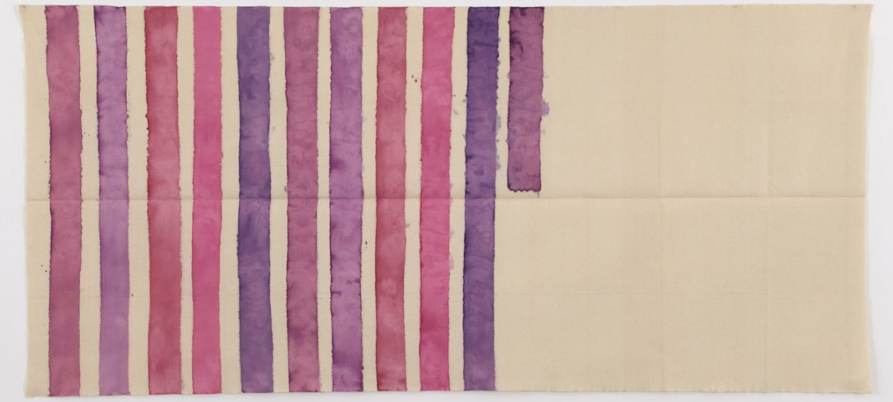The exhibition “Giorgio Griffa: The 1970s” – featuring the subtle paintings of the contemporary Italian artist – opened last week at the Casey Kaplan Gallery in New York. This is Griffa’s third recent exhibition in the United States, since his first at the Sonnabend Gallery in 1970. Born in Turin in 1936, Griffa made a radical shift in his painting practice in 1968: he began tacking raw, unstretched canvas of different tones and textures to the ground and applying only watercolor and Liquitex acrylics to form seemingly un-ruled lines. Inspired by the mathematical Golden Ratio – like many of his contemporary Arte Povera artists – Griffa’s strokes appear to simply repeat for a while, and then stop. He reduces paintings to absolute basics: raw canvas, delicate color combinations, and faint compositions. And yet, his paintings are arresting: as if whispers ceasing in mid-sentence. They are captivating and leave you lingering, and looking for more. This exhibition is important because it focuses on a body of work produced during the decade when Griffa first adopted this motif, and also because it is one of the rare shows to present a lesser-known Italian artist to an American audience. The show is not to be missed, and will be on view until February 6, 2016.
Exhibition Installation of “Giorgio Griffa: The 1970s” at the Casey Kaplan Gallery, New York
Quasi dipinto (Nearly Painted), 1968, Acrylic on canvas
Pennello Piatto (Flat Pannel), 1971, Acrylic on canvas
Viola verticale (Vertical Purple), 1978, Acrylic on canvas




